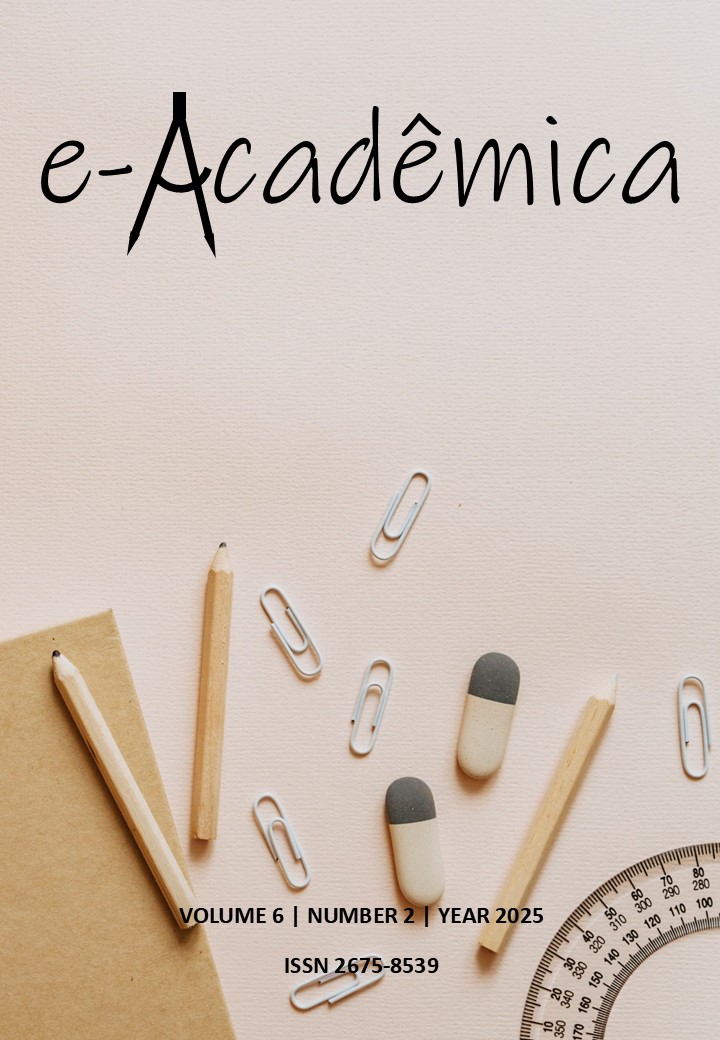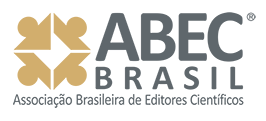Reconstitution of botulinum toxin: Impact of temperature on efficiency and interaction with snap-25 protein - literature review
DOI:
https://doi.org/10.52076/eacad-v6i2.646Keywords:
Botulinum Toxin; Reconstitution; SNAP-25; Orofacial Harmonization.Abstract
This study aims to provide an analysis of the reconstitution of botulinum toxin, through an integrative literature review. Botulinum toxin, widely used in orofacial harmonization and other clinical applications, acts by inhibiting the release of acetylcholine through the cleavage of the protein, resulting in temporary muscle paralysis. To maximize efficacy, it is essential to ensure optimal reconstitution and storage conditions, with emphasis on the use of sterile saline between 2°C-8°C. The methodology used was an integrative review based on the PICO strategy, with analysis of relevant scientific publications between 2018 and 2024. The results confirm that the stability of botulinum toxin type A is sensitive to temperature and pH, and the refrigerated interval is essential to preserve its structure and functionality. In addition, the interaction with cofactors such as zinc directly influences the cleavage efficacy of SNAP-25. The findings reinforce the need for technical rigor in the handling of botulinum toxin type A, highlighting gaps in the literature on the direct impact of temperature on clinical efficiency. It is suggested that additional experimental studies be carried out to optimize reconstitution practices and broaden the understanding of the biochemical effects of the toxin in therapeutic and aesthetic applications.
References
Andrade, D. C. M. & Junior, J. P. M. (2023). O uso de toxina botulínica tipo A na harmonização orofacial: revisão de literatura. FACSETE Health Sciences. 2(2). https://facsete.com.br/revista/index.php/FACSETEHealthSciences/article/view/36/48.
Aversa, F. P. C., Hassunuma, R. M. & Garcia, P. C. (2022). Usando a bioinformática para compreender a inibição da proteína SNAP-25 pela toxina botulínica do sorotipo A. Revista Multidisciplinar de Educação e Meio Ambiente. https://ime.events/iii-conbracib/pdf/6533.
Bardin L. (1977). Análise de conteúdo. Edições 70.
Cardoso, N. L. (2020). O uso de toxina botulínica tipo A no tratamento de rugas dinâmicas periorbitais. [Trabalho de Conclusão de Curso]. https://repositorio.uniceub.br/jspui/handle/prefix/15042.
Crossetti, M. O. (2012). Revisão integrativa de pesquisa na enfermagem: o rigor cientifico que lhe é exigido. Revista Gaúcha de Enfermagem. 33(2):8-9. https://www.scielo.br/j/rgenf/a/9TrSVHTDtDGhcP5pLvGnt5n/?lang=pt&format=pdf.
Dressler, D., Saberi, F. A. & Barbosa, E. R. (2005). Botulinum Toxin Mechanisms of Action. Arq Neuropsiquiatr. 63(1):180-5. https://www.scielo.br/j/anp/a/W8GxPmf8mkb7cz4tXb3bWMt/?format=pdf&utm.
Gil, A. C. (2017). Como elaborar projetos de pesquisa. (6ed). Editora Atlas.
Gutierre, T. C. M., Suguihara, R. T. & Muknicka, D. P. (2023). Toxina botulínica terapêutica na harmonização orofacial. 12(12). https://rsdjournal.org/index.php/rsd/article/view/44066.
Matrone, M. A., Costa, M. M. G., Barca, M. C., Matrone, T. R. & Ikeoka, K. (2022). A otimização dos resultados da denervação muscular química através da reconstituição da toxina botulínica do tipo A em veículo fisiológico estéril injetável enriquecido com zinco. Health & Society. 2(01), 38-63.
Miranda, M. T. M. (2024). Toxina botulínica: mecanismos de ação e aplicações estéticas. [Trabalho de Conclusão de Curso]. https://repositorio.unesp.br/server/api/core/bitstreams/67d3096c-a08a-4b20-9137-f23dee9ca7f5/content.
Moore, A. A., Nelson, M., Wickware, C., Choi, S., Moon, G., Xiong, E., Orta, L., Brideau-Andersen, A., Brin, M. F., Broide, R. S., Liedtke, W. & Moore, C. (2023). OnabotulinumtoxinA effects on trigeminal nociceptors. Cephalalgia;43(2):3331024221141683. doi: 10.1177/03331024221141683. PMID: 36751871; PMCID: PMC10652784. https://pubmed.ncbi.nlm.nih.gov/36751871/
Moreto, M. E. G. (2024). Efeitos Adversos da Toxina Botulínica na Harmonização Orofacial: Revisão narrativa de literatura. [Trabalho de Conclusão de Curso]. https://repositorio.ufsc.br/bitstream/handle/123456789/261890/ilovepdf_merged%20%281%29%20%282%29.pdf?sequence=3&isAllowed=y.
Oermann, M. F. (2020). A Step-by-Step Guide to Conducting an Integrative Review. Springer Nature Switzerland AG; 2020. 106 p. In: Toronto CE, Remington R, editors. https://dl.uswr.ac.ir/bitstream/Hannan/141158/1/9783030375034.pdf.
Pereira A. S. et al. (2018). Metodologia da pesquisa científica. [free e-book]. Editora da UAB/NTE/UFSM.
Santos, C. C., Pimenta, C. A. M. & Nobre, M. R. C. (2007). A estratégia PICO para a construção da pergunta de pesquisa e busca de evidências. Revista Latino-americana de Enfermagem. 15(3), 508-11. https://www.revistas.usp.br/rlae/article/view/2463/2851.
Soares, B. S. (2022). O farmacêutico e suas contribuições com a saúde estética. [Trabalho de Conclusão de Curso]. Anhanguera de Rio Grande, Rio Grande. https://repositorio.pgsscogna.com.br/bitstream/123456789/64993/1/Bruna.pdf.
Souza, L. M., Marques-Vieira, C. M. A., Severino, S. S. P. & Antunes, A. V. (2017). A metodologia de revisão integrativa da literatura em enfermagem. Revista Investigação em Enfermagem. 2(21): 17-26. https://www.researchgate.net/publication/321319742_Metodologia_de_Revisao_Integrativa_da_Literatura_em_Enfermagem
Torraco, R. J. (2016). Writing Integrative Reviews of the Literature: Methods and Purposes. Human Resource Development Review. 7(3), 62–70. Doi: http://doi.org/10.4018/IJAVET.2016070106. https://sageprofessor.com/wp-content/uploads/2017/10/writing-integrative-reviews-of-the-literature-methods-and-purposes.pdf. 1
Downloads
Published
How to Cite
Issue
Section
License
Copyright (c) 2025 Christopher Anderson de Oliveira; Roger Kirschner; Pierangelo Angeletti

This work is licensed under a Creative Commons Attribution 4.0 International License.
Autores que publicam nesta revista concordam com os seguintes termos:
1) Autores mantém os direitos autorais e concedem à revista o direito de primeira publicação, com o trabalho simultaneamente licenciado sob a Licença Creative Commons Attribution que permite o compartilhamento do trabalho com reconhecimento da autoria e publicação inicial nesta revista.
2) Autores têm autorização para assumir contratos adicionais separadamente, para distribuição não-exclusiva da versão do trabalho publicada nesta revista (ex.: publicar em repositório institucional ou como capítulo de livro), com reconhecimento de autoria e publicação inicial nesta revista.
3) Autores têm permissão e são estimulados a publicar e distribuir seu trabalho online (ex.: em repositórios institucionais ou na sua página pessoal) a qualquer ponto antes ou durante o processo editorial, já que isso pode gerar alterações produtivas, bem como aumentar o impacto e a citação do trabalho publicado.










